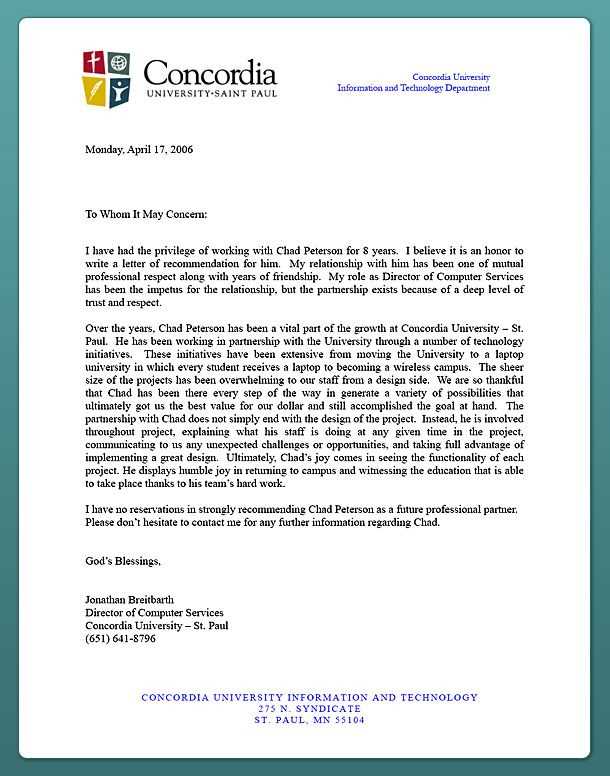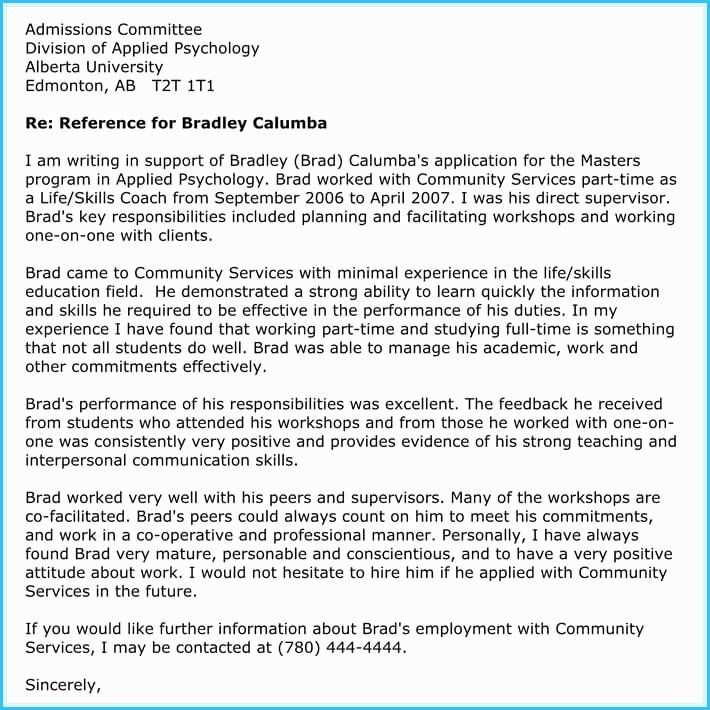Reference letter template for university application

Provide clear and specific examples of the applicant’s academic and personal achievements. Start by addressing the recipient and introducing yourself briefly. Mention your relationship to the applicant, including how long you have known them and in what capacity. This establishes context for your recommendation.
Focus on the applicant’s strengths, skills, and qualities that make them suitable for the university program. Highlight particular achievements, such as their work ethic, critical thinking abilities, or leadership potential. Use concrete instances to back up your statements, making the recommendation more compelling.
Be honest and thoughtful in your assessment. Avoid vague phrases and generalities. Instead, provide a genuine evaluation based on your experience. If there are areas where the applicant has shown growth or improvement, mention them as well.
Conclude with a strong endorsement, summarizing why the applicant is a good fit for the program. Offer to provide further information if needed, and express your confidence in their future success.
Reference Letter Template for University Application
Provide a clear introduction to your relationship with the applicant. Mention how long you’ve known them and in what capacity. This sets the tone for the reader and highlights the context of the recommendation.
Example: “I have had the pleasure of working with Jane Doe for over two years as her supervisor at XYZ Company, where she consistently demonstrated exceptional problem-solving skills and a strong work ethic.”
Next, focus on the applicant’s strengths. Highlight specific skills, achievements, and qualities that make them a strong candidate for university. Be specific about their academic, personal, or extracurricular accomplishments that align with the program they are applying for.
Example: “Jane’s ability to analyze complex issues and present clear, actionable solutions has been a significant asset to our team. Her academic success in advanced mathematics courses further supports her ability to thrive in challenging academic environments.”
Offer specific examples of how the applicant has demonstrated these strengths. Concrete evidence of their achievements will make your recommendation more credible and persuasive.
Example: “In one instance, Jane led a project where we streamlined our operations, which resulted in a 30% improvement in efficiency. Her leadership and attention to detail were key factors in the success of this initiative.”
Conclude the letter by expressing your strong support for the applicant’s university application. Be clear about your confidence in their abilities and potential.
Example: “I am confident that Jane will excel in her academic pursuits and make a meaningful contribution to the university community. I highly recommend her for admission and believe she will be an outstanding addition to your program.”
Ensure the letter is concise, focused, and free of any unnecessary embellishments. A direct and factual approach strengthens the recommendation’s impact.
Choosing the Right Referee for Your Application
Selecting the right referee is one of the most important steps in strengthening your university application. The right referee should be someone who knows you well and can speak to your abilities, character, and academic potential. Here are some points to consider when choosing your referee:
- Academic background: Choose someone familiar with your academic work, such as a professor or course instructor, who can speak to your intellectual abilities and academic achievements.
- Relevance to your field of study: A referee with expertise in your chosen field can provide a more targeted and impactful recommendation.
- Personal connection: Opt for someone who has observed your work ethic, dedication, and personal growth. This could be a mentor, advisor, or research supervisor who can provide specific examples of your strengths.
- Credibility and reputation: A referee with a solid reputation in their field adds weight to your application. Consider how the referee is perceived within academia or your chosen profession.
It’s best to approach someone who can provide a detailed, personalized letter. A strong recommendation is more impactful than a generic endorsement. Make sure to provide your referee with all the necessary information, such as deadlines and specific requirements for the application.
Structure of a Strong Reference Letter
Begin with a clear introduction that establishes the relationship between the recommender and the applicant. This section should detail how long the recommender has known the applicant and in what capacity. Mention specific roles or experiences that demonstrate the applicant’s qualifications and strengths.
1. Introduction
State the recommender’s position and the applicant’s role or connection. Be precise and avoid vague language. This section builds credibility for the recommendation.
2. Skills and Qualities
Highlight the applicant’s most relevant skills. Focus on qualities that align with the university program, such as problem-solving, leadership, or teamwork. Be specific with examples of how the applicant demonstrated these traits in relevant situations.
| Skill | Example |
|---|---|
| Leadership | Led a project team, organizing tasks and motivating peers. |
| Problem-solving | Identified issues in the process and proposed efficient solutions. |
3. Conclusion

End with a strong statement of recommendation. Reaffirm the applicant’s suitability for the program and express confidence in their potential. Avoid generic phrases and ensure the endorsement is specific to the context of the application.
Highlighting Key Academic Achievements and Strengths
Focus on concrete examples that demonstrate your academic capabilities. Reference specific projects, papers, or research that reflect your ability to analyze complex ideas and produce thoughtful work. Mention any awards, scholarships, or recognitions you’ve earned for exceptional performance in your studies.
Be sure to highlight areas where you have excelled, such as strong grades in challenging courses, success in academic competitions, or significant contributions to academic discussions in your field. If you’ve taken the initiative to pursue additional coursework or certifications outside the standard curriculum, include this to show your commitment to deepening your knowledge.
Don’t overlook the development of key skills such as critical thinking, problem-solving, and communication. Highlight how these strengths have enabled you to stand out among your peers, whether through group projects, presentations, or other collaborative efforts.
Provide clear examples of how these strengths have positively impacted your academic environment and your ability to thrive in rigorous academic settings. This approach helps the reader understand the specific qualities that will make you successful at the university level.
Demonstrating Personal Qualities Through Specific Examples

To showcase personal qualities in a reference letter, focus on actions or instances where these traits directly influenced outcomes. Instead of general statements, offer concrete examples. For instance, rather than stating someone is a “natural leader,” highlight a specific situation where they led a team through a challenging project and achieved measurable results.
For qualities like resilience, describe a particular moment when the person faced adversity but remained committed, overcoming obstacles to complete their task. Mention the obstacles and the steps they took to navigate them, showcasing their determination and perseverance.
When discussing creativity, provide examples of how the individual solved problems with innovative approaches. Point out specific projects where their out-of-the-box thinking led to successful solutions, explaining the context and the impact their ideas had on the team or project.
Incorporate feedback from peers or supervisors when possible. This adds credibility and reinforces the positive attributes you’re highlighting. Concrete anecdotes and evidence from others enhance the authenticity of your claims, allowing the reader to envision the individual’s contributions more clearly.
Including Relevant Skills for the Chosen Program
Focus on specific skills that align directly with the program you are applying for. The goal is to demonstrate your capability to succeed in the program’s coursework and environment. Highlight technical, analytical, and communication skills that are particularly valued in the field of study.
Here are some skills that might be relevant depending on the program:
- Research Skills – Emphasize your ability to gather, evaluate, and synthesize information. Provide examples where you’ve used these skills in academic or personal projects.
- Problem-Solving Skills – Discuss how you have solved complex problems in academic, professional, or personal contexts, especially those that require critical thinking.
- Teamwork and Collaboration – Highlight your experience in working with others on projects, emphasizing your ability to contribute and work cohesively within a team.
- Time Management – Provide examples of how you manage multiple tasks or deadlines effectively, which is especially important in a rigorous academic environment.
- Technical Proficiency – Depending on the program, list specific software, tools, or methodologies that you are familiar with and that are relevant to your field.
Be sure to present these skills with concrete examples to make your application stand out. Use your reference letter to showcase how your skills will allow you to thrive in the program and contribute meaningfully to the academic community.
Final Steps: Proofreading and Formatting the Letter
Double-check for grammar and spelling mistakes before submitting the reference letter. Read it through at least twice, focusing on both the content and language. Look for awkward phrasing and ensure that each sentence flows smoothly.
Formatting Consistency

Ensure consistent formatting throughout the letter. Use a standard font like Arial or Times New Roman, size 12. Keep the margins uniform and align the text to the left. Avoid excessive spacing between paragraphs and use a single line spacing for readability.
Final Review
Have someone else review the letter. Fresh eyes may spot errors you’ve missed. Ask them to focus on clarity and tone to ensure the message is direct and professional. Make any final adjustments based on their feedback.